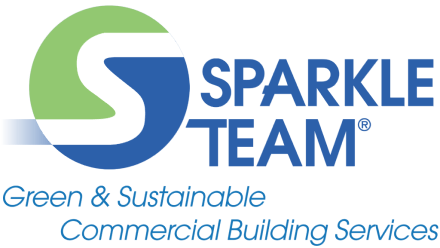The Top 5 Facility Management Trends in 2024

The 2020s so far have caused many upheavals for facility managers. A new year promises more challenges — but also opportunities for growth and adaptation. From new technology to renewed sustainability efforts, we explore the trends reshaping the future of facility management.
The hybrid office is here to stay
Since 2020, remote work has shifted from temporary necessity to common fixture. A recent Gallup poll found 40% of remote-capable employees adopted hybrid arrangements. Florida’s cities have embraced the model, with Orlando, Tampa, Daytona Beach, Tallahassee and Miami listed among the top 50 cities for hybrid work.
The hybrid office also brings new logistical challenges, entailing fresh approaches to space planning, technology and maintenance. For example, the rising popularity of “hot desks” requires frequent cleaning and disinfection as more people share the same work stations. Thorough cleanings are especially important during changeovers between different in-office shifts.
Facilities prioritize health and wellness
Occupant health remains important in 2024. The latest office design trends prioritize air filtration, ergonomic design features, biophilic elements and natural light. Meanwhile, third-party certified green cleaning products and complementary cleaning methods help improve indoor air quality by removing dust and allergens without introducing potentially harmful chemicals.
Sustainability is more important than ever
Sustainability takes center stage in 2024, as more businesses invest in reducing their environmental impact. Sustainability is a vital component of ESG (environmental, social and governance) ratings, which investors use to assess companies. This adds a financial incentive to sustainability initiatives, prioritizing energy efficiency, water usage, waste management and green cleaning and maintenance programs.
Management costs may stabilize as inflation slows down
CBRE’s recent Facilities Management Trends report predicts costs will rise by 2.5% percent in 2024. These inflation rates vary dramatically from recent years when cost inflation peaked at 7.6% in 2022. So far, stabilizing energy prices and global supply chains help soften inflation.
However, these pandemic-era cost hikes will not deflate anytime soon. For example, common consumables like paper products will keep their previously inflated prices into 2024, as large providers like Kimberly Clark still recover from high supply costs. Rising labor costs also add pressure to budgets. In Florida for example, the current $12 minimum hourly wage will increase to $13 by September 30th this year, eventually growing to $15 by 2026.
Data Tech and AI adoption expand
Emerging data and machine learning technologies promise to help managers better allocate resources, reduce costs, and improve overall sustainability efforts. Think HVAC and lighting systems that adjust to fluctuating occupancy levels. Or IoT (Internet of things) sensor networks tracking soap and paper towel supplies in restrooms. Predictive maintenance software can even anticipate equipment breakdowns.




